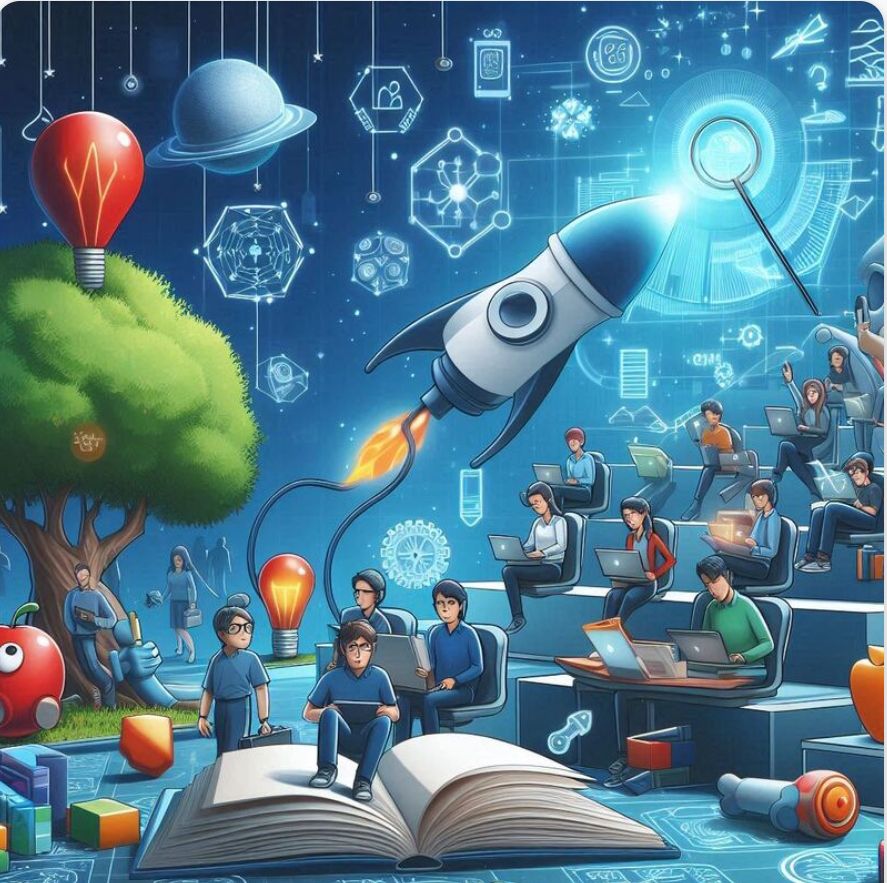
In the ever-evolving landscape of education, online learning has surged to the forefront, offering flexibility and access like never before. However, with this shift comes the challenge of keeping students engaged in a digital environment. One innovative approach that has gained significant traction is gamification. By incorporating game elements into educational content, gamification transforms the learning experience, making it more interactive, enjoyable, and effective. In this post, we’ll delve into how gamification is revolutionizing online learning, exploring its benefits, applications, and future potential.
What is Gamification in Online Learning?
Gamification refers to the application of game design principles and mechanics—such as point scoring, leaderboards, and achievement badges—to non-game contexts, particularly in education. The goal is to motivate and engage learners by leveraging their natural inclination towards competition, achievement, and collaboration.
Key Components of Gamification
Points and Scoring Systems: Earn points for completing tasks or answering questions correctly.
Badges and Rewards: Achieve milestones and earn badges or rewards for progress.
Leaderboards: See how you rank against peers to foster a competitive spirit.
Levels and Progression: Advance through levels as you complete modules or lessons.
Challenges and Quests: Participate in engaging tasks that mimic game-like adventures.
Feedback and Iteration: Receive immediate feedback to understand performance and areas for improvement.
The Benefits of Gamification in Online Learning
1. Enhanced Engagement
Gamification captures the attention of learners by making educational content more dynamic and interactive. Students are more likely to stay motivated and committed to their studies when they are actively participating and enjoying the process.
2. Improved Retention and Recall
Studies have shown that gamification can improve information retention and recall. The use of interactive elements and immediate feedback helps reinforce learning and enables students to better remember and apply what they’ve learned.
3. Encourages Active Learning
By transforming passive learning into an active experience, gamification encourages students to take initiative, solve problems, and apply their knowledge in practical scenarios. This active participation fosters deeper understanding and critical thinking skills.
4. Promotes Continuous Learning
Gamified elements like levels and challenges provide a clear pathway for progression, encouraging students to continue their learning journey. The desire to achieve the next level or earn more points keeps learners coming back for more.
5. Fosters Collaboration and Social Interaction
Many gamified learning platforms include features that promote collaboration and social interaction, such as team challenges or group leaderboards. These elements help build a sense of community and support peer learning and communication.
6. Personalized Learning Experiences
Gamification allows for the customization of learning experiences to suit individual student needs and preferences. Learners can progress at their own pace, choose their paths, and focus on areas where they need the most improvement.
Applications of Gamification in Online Learning
1. Language Learning Platforms
Platforms like Duolingo use gamification extensively to teach new languages. Users earn points, unlock levels, and receive rewards for completing lessons, making the process of language acquisition both fun and effective.
2. Corporate Training Programs
Companies integrate gamification into their training programs to enhance employee engagement and skill development. Interactive modules, quizzes, and simulations keep employees motivated and improve the retention of training content.
3. Educational Apps and Tools
Apps like Kahoot! and Quizlet bring gamification to classroom settings, allowing educators to create engaging quizzes and activities that reinforce learning in a playful yet educational manner.
4. Self-Paced Online Courses
Many self-paced online courses incorporate gamification to encourage learners to complete modules and stay committed to their educational goals. Coursera, edX, and other platforms use badges, certificates, and interactive elements to enhance the learning experience.
5. Virtual Classrooms and E-Learning Platforms
Virtual classroom tools like Classcraft use gamification to manage classroom behavior and boost student engagement. Teachers can award points for participation, set up quests related to the curriculum, and create a vibrant learning environment.
Future Potential of Gamification in Online Learning
As technology continues to advance, the potential for gamification in online learning expands. Emerging trends include the integration of virtual reality (VR) and augmented reality (AR) to create immersive learning experiences. Additionally, the use of artificial intelligence (AI) can further personalize gamified learning paths, tailoring content and challenges to the unique needs of each learner.
Conclusion
Gamification has proven to be a powerful tool in enhancing the online learning experience. By making education more engaging, interactive, and enjoyable, it addresses the challenge of maintaining student motivation and interest in a digital world. Whether through points, badges, or interactive challenges, gamification transforms how we learn, making it an exciting and rewarding journey.
Embrace the power of gamification and unlock a world of possibilities in online learning. Whether you’re a student looking to boost your motivation or an educator seeking to enrich your teaching methods, gamification offers a dynamic and effective pathway to educational success.











